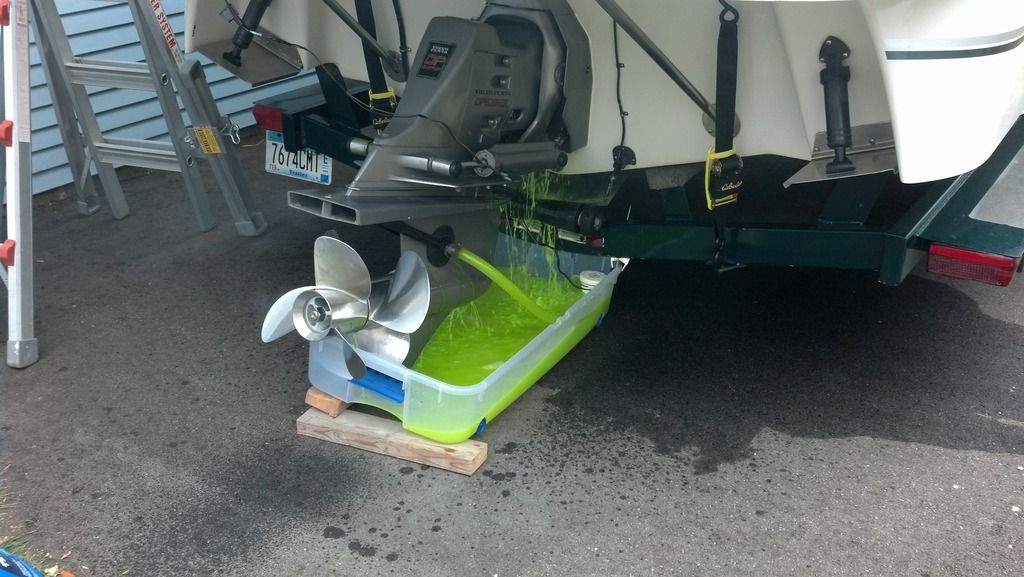On many installations the flushing port is intended to be used to flush the engine while it is shut off, but it was not meant to be used to run the engine. The flushing system does not feed the inlet side of the raw water pump, so the pump may be compromised if the engine is run. I use the muffs to run the engine. I drain most of the water in the fall, then add antifreeze into the engine thru the flushing connection. I then add a few gallons of antifreeze to a plastic tub under the outdrive and use a 750 gph bilge pump connected by a short hose to the muffs to pump antifreeze from the tub to the engine. I use alligator clips to connect an old 2 wire extension cord with an inline switch to the battery to power the pump. I run the engine for several minutes while watching the water temp, other gages, and engine. I usually shut down at 120-130 degrees. This gives the engine enough time to circulate antifreeze thoroughly throughout the engine's cooling system, from the inlet port on the outdrive through the engine and the exhaust system. Its worked well for over 20 years. I do recapture the antifreeze in the spring, test it for concentration, and re-use it the next fall. In the spring I drain all the antifreeze I can, hook up the hose to the muffs and run it while catching the first few gallons of diluted antifreeze for disposal.




